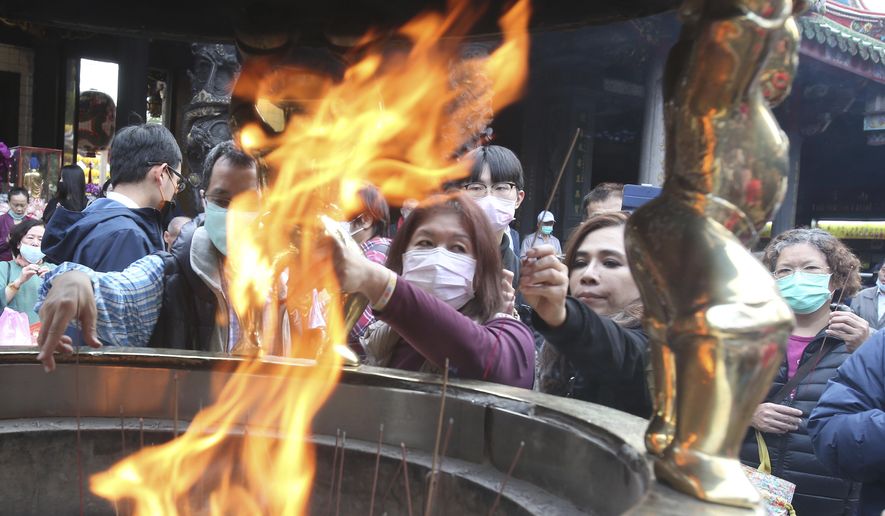The long standoff between communist mainland China and the breakaway democratic island of Taiwan has infected the tally of coronavirus.
Sen. Marco Rubio, Florida Republican, tweeted this week that China “bullied” Johns Hopkins University into relabeling Taiwan on the school’s popular virus internet tracking map.
The page keeps a running count of coronavirus, or COVID-19, cases, deaths and locations. The public loves the resource. It is logging over a billion browser requests each day.
“It appears #China bullied a U.S. university, Johns Hopkins, into changing their #coronavirus interactive map,” Mr. Rubio said, his tweet showing the page’s before-and-after screen shots.
Johns Hopkins’ initial map listed Taiwan as a country in its reported case column, along with all the other nations that have announced the number of confirmed infections. This includes China, the leader by far, as the birthplace of coronavirus in the city of Wuhan.
As the global case count rose over 100,000, and Taiwan reported its first death, John Hopkins listed the county as “Taipei and environ, China.” This suggested Taipei, the capital, is under Beijing’s rule.
Washington maintains an active relationship with Taiwan, and pledges to defend it, but recognizes only one China — the mainland communist regime.
Then came another change. Johns Hopkins went back to the “Taiwan” identity, but added an asterisk.
The Washington Times asked the school to explain.
“From its start in January, the COVID-19 tracking map and database has been an open and transparent public health resource, serving a billion daily requests from around the world,” the school said. “During a comprehensive review of the dashboard this week, Professor Lauren Gardner and her team decided to align the names of nations with the World Health Organization’s naming conventions to achieve consistency in reporting. Upon further consideration, the team is revising the map to employ U.S. State Department naming conventions, including the use of Taiwan.”
Explaining the asterisk, the school pointed to a footnote that said, in part, “The Website relies upon publicly available data from multiple sources, that do not always agree. The names of locations correspond with the official designations used by the U.S. State Department, including for Taiwan.”
Mr. Rubio is not only watching the Johns Hopkins map.
He is using the COVID-19 outbreak to speak out about China’s use of slave labor and is also trying to convince American drug makers to return more pill-making operations to domestic sites. China makes about 80 percent of all U.S.-consumed antibiotics.
After a Senate visit by President Trump, Mr. Rubio tweeted “I asked @POTUS to support our efforts to invest in diversifying our supply chain, especially in pharmaceuticals & medical equipment.”
In mid February, the Department of Education launched an inquiry into U.S colleges accepting huge sums of money from foreign sources including China.
By law, colleges and universities must report gifts of over $250,000. The department said 10 schools belatedly reported over $3 billion in such gifts and contract payments.
A John Hopkins spokesperson said the school accepts no Chinese gifts.
Foreign Policy.com reported in 2017 that John Hopkins School of Advanced International Studies (SAIS) in Washington had announced an endowed professorship in its Chinese Studies department.
Foreign Policy said the money came in part from the China-U.S. Exchange Foundation (CUSEF). The news outlet described the foundation as a “Hong Kong-based nonprofit.”
“CUSEF is a registered foreign agent bankrolled by a high-ranking Chinese government official with close ties to a sprawling Chinese Communist Party apparatus that handles influence operations abroad, known as the ’united front,’” the Foreign Policy.com report said.
• Rowan Scarborough can be reached at rscarborough@washingtontimes.com.




Please read our comment policy before commenting.